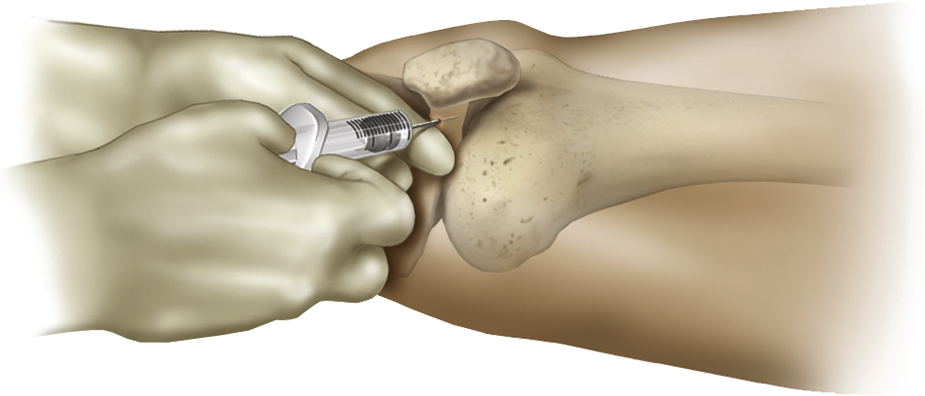arthrocentesis /är′thrōsintē″sis/ [Gk, arthron + kentesis, pricking] , the puncture of a joint with a needle and the withdrawal of fluid, performed to obtain samples of synovial fluid for diagnostic purposes. It may also be used to instill medications and to remove fluid from joints to simply relieve pain. A local anesthetic is usually administered; surgical asepsis is observed in the procedure. Normal synovial fluid is a clear, straw-colored, slightly viscous liquid that forms a white, viscous clot when mixed with glacial acetic acid; if inflammation is present, as in rheumatoid arthritis, the fluid is watery and turbid, and its mixture with glacial acetic acid results in a flocculent, easily broken clot. The number of leukocytes, especially polymorphonuclear cells, and the protein content are increased, and the glucose level is decreased if inflammation is present. Synovial fluid samples are also cultured and examined microscopically to diagnose a septic process, such as bacterial arthritis.

